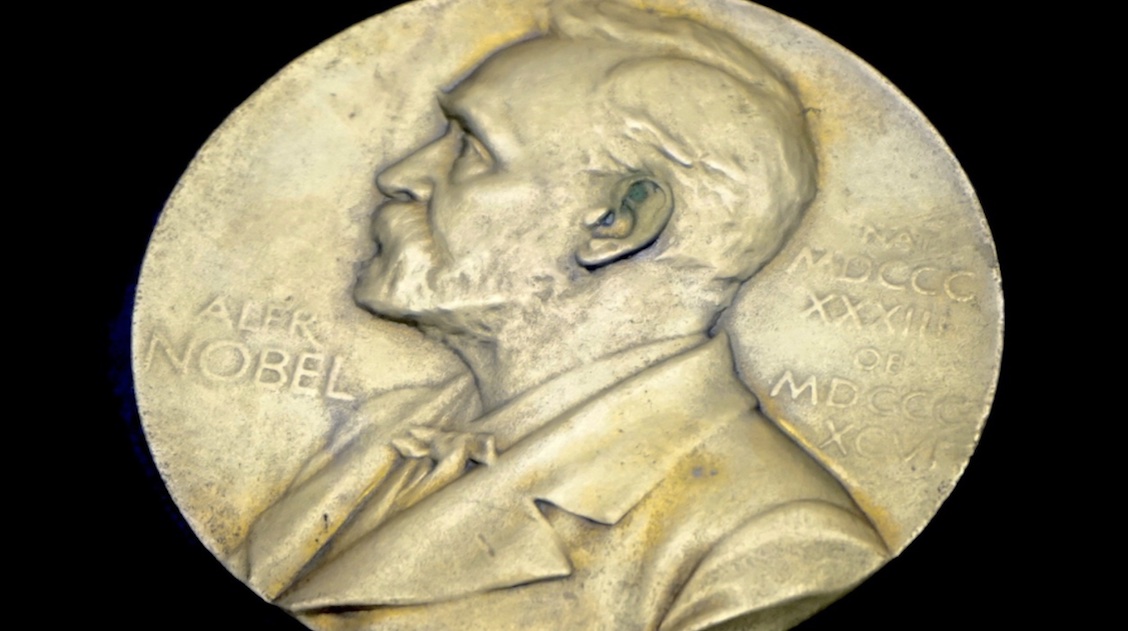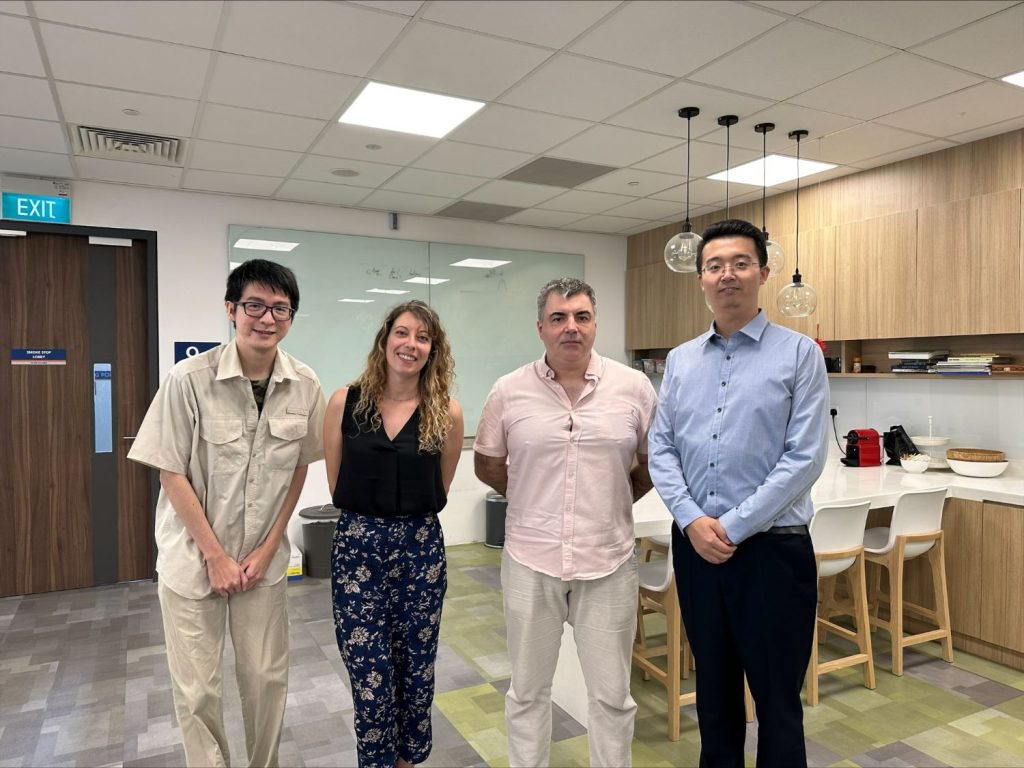
Journal Reflections from Sir Konstantin Novoselov, Nobel Prize Winner
Konstantin (Kostya) Novoselov is a Russian-British physicist specializing in condensed matter physics, mesoscopic physics, and nanotechnology. He received his PhD in Radboud University of Nijmegen in 2004 and in 2010, Konstantin Novoselov and his collaborator Andre Geim were awarded the Nobel Prize in Physics. They received this highly prestigious award “for groundbreaking experiments regarding the two-dimensional material graphene”. Graphene has good heat and electrical conductivity, and its creation has led to many applications, including in electronics.
As an example, adding even trace amounts of graphene to plastics, metals, or other materials can make them stronger or lighter (or both). This allows for extensive use in everything from aerospace to mobile devices to building materials and more. He has been cited over 180,000 times with a h-index of over 110, making him a key person within the field.
Adding to his long list of accolades, Novoselov was knighted in 2012.

He is currently the Director of the National University of Singapore’s Institute of Functional Intelligent Materials (I-FIM).
In this article, we will go over some of the points made in Novoselov’s review, published in Solids, as well as some of his views on academic publishing as a whole.
Two-dimensional quantum dots
At the end of 2022, Sir Konstantin Novoselov and colleagues published a review in the MDPI journal, Solids. This review summarizes contemporary research and applications of quantum dots.
These are synthetic nanoparticles of crystalline materials that possess electroconductive and photoluminescent properties. Currently, quantum dots are often used in many different applications. Some of these include light-emitting diodes (LEDs), photovoltaic cells, transistors, quantum computing, bioimaging, and biosensing.
As noted in the article,
“[S]tudies and outcomes observed in the field of 2D materials over the last decade has established this field as one of the fastest growing topics in material science. It is known that there are thousands of stable crystalline 2D materials, so that although much has already been done in this area, there are still opportunities for researchers to produce impactful research in this area.”
According to the article, it is the unique optical properties of quantum dots that allows them to play such a fundamental role in nanotechnology, in particular, their photoluminescence.
What are 2D quantum dots?
Originally theorized in the 1970s and experimentally demonstrated in the 1980s, “[q]uantum dots (QDs) are synthetic nanoparticles—in the range of 2 nm to 10 nm, of crystalline materials in which their size dimensions influence the quantum confinement of electrons and holes.”
Novoselov’s review further notes that,
“Intensive research of the properties of 2DQDs over the last decade have revealed their outstanding properties and grabbed the attention of researchers from different fields: from photonics and electronics to catalysis and medicine.”
Research in this area is both ongoing and exciting.
What are functional intelligent materials?
As Sir Novoselov is currently the Director of the National University of Singapore’s Institute of Functional Intelligent Materials, here we discuss these FIMs in greater detail.
Functional intelligent materials, or FIMs, are able to alter their behaviors in response to a changing environment. For example, a synthetic living membrane could be designed to recognize the presence of an imbalance in the environment and change its permeability for homeostatic purposes. Another example would be a material that can be photosensitive to specific patterns of light. Functional intelligent materials are able to do this using machine learning, allowing them to “learn” and “memorize” information. Based on what they learn, they can act when environmental stimuli change.
FIMs are created with smart applications in mind, and examples of fields where they could be used include healthcare, catalyzing chemical reactions, electronics, and coating.
Because research into FIMs is fundamentally highly interdisciplinary, in involves scientists from fields as diverse as biology, quantum physics, mathematics, and artificial intelligence.
Novoselov’s perspectives on scientific publishing
It’s not often a Nobel Prize winner takes time out of their busy schedule to meet with journal publishers. Sir Novoselov was kind enough to sit down with us in December 2022 to go over some of his thoughts about scientific publishing. As an accomplished academic, we believe that his feedback and ideas may be valuable to other academics, particularly to those who are earlier in their careers.
Here are five points that Novoselov notes as being important factors when it comes to scientific publishing:
- In addition to impact factor and journal ranking, the quality, background, and recognition of submitting authors, and the Editorial Board, are good indicators of a journal’s reputability.
- Scholars should look at the quality of the authors (background, publications, h-index, reputation), as well as the quality of the editors on the Editorial Board. Novoselov notes, however, that “impact factor is still the easiest way to assess a journal’s quality”.
- In the past, journals were opened and read every month. Now, people don’t tend to consult individual journals. Now, scholars should rely on archives for an overview of recently published research and advancements in the field.
- Publishers need to be wary of their journals becoming platforms for reporting shallow data without significant readerships. Broadly speaking, shallow data refers to simple descriptive datasets with minimal analyses performed within the study. The inferences and conclusions drawn in these papers may be shallow and not impactful.
- Journals should work closely with the research community to identify opportunities to grow their respective disciplines.
With these points, Novoselov presents a number of very valuable pieces of advice that can be followed in the context of scientific publishing. To learn more about impact factors, we encourage further reading as we have covered this subject previously.
Some final thoughts on journal reputability
MDPI maintains journal quality and reputability through a rigorous peer review process and fast response time to address problems. We follow closely established guidelines for quality and ethics in open access publishing and are members of COPE and OASPA among others. As Sir Novoselov notes, paying attention to standards and results of journals is immensely valuable when it comes time to publish your work.
We would like to thank Sir Novoselov for taking the time to meet with us, and we share his sentiments on the importance of maintaining journal quality and reputability.
The Information for Authors page has a great deal of valuable information to learn more about publishing with MDPI.










